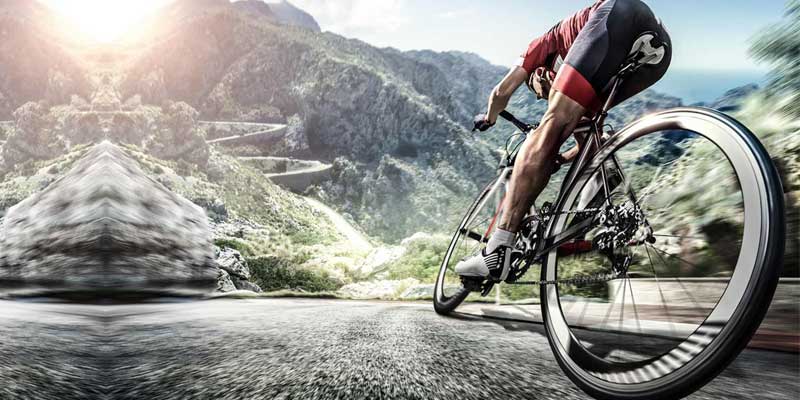We all know that wheels fall broadly into two different types; clinches and tubular. All of these systems have relative advantages and disadvantages but I am going to show you the key differences between common wheels type available to cyclists and which one is the fastest.
Clincher
Your bike probably came with clincher wheels and this is for good reason. Clinches are actually the most common type of bike wheel currently available. Clinches use an open cross-section tyre with a bead that holds it in place on the rim profile. With an inner tube that’s placed then inside the tyre against the rim.
The advantage of a clincher is that it’s easier to repair punctures just by carrying spare inner tubes. It’s also easier to change the tyre as it can be done in minutes. Clinch tyres are often cheaper than tubular tyres as well.
The disadvantage is that clinches are often heavier than a tubular rim. That means you have a higher rotational weight at the rim than you do with a tubular. Braking surfaces often encounter higher stress on clincher rims as well because they have to withstand the outward pressure of the tyre bead and the inward pressure of the braking as well as the heat buildup.
Tubular
Once upon a time before the invention of clinches, tubular were the only wheels available to cyclists. But now their application is mainly for racing. This is because tubular wheels use tubular tyres, which are enclosed and feature an inner tube that’s sewn inside the tyre carcass. This is then glued onto the rim. It’s much less convenient if you have a puncture and have to change a tyre.
But tubular wheels are often lighter than clincher wheels. The rim doesn’t have to be as strong because it doesn’t have to support the force of the bead of the tyre.
If you’re riding on a tubular tyre and are unfortunate enough to get a puncture and there are a couple of options. The first is to use a sealant such as Vittoria Pit-Stop which can be injected into the valve and then can seal up the hole. If the hole is too big then it probably won’t seal it. Alternatively, you can carry a spare tube and peel the existing one off the rim and then place a new one on. This won’t be bonded as strongly to the rim so if you’re cornering at speed, you stand a higher chance of rolling the tyre off the rim and having an accident.
If you’re racing in the Tour de France or you’re even fortunate enough to have a support vehicle carrying a load of tubular wheels on the back then tub can be a joy to ride. But for training rides and everyday use, even professionals use clinches.
The advantage of tubular wheels is that they’re often lighter than their clincher counterparts and a lighter rim is better for acceleration and climbing. Tubular tyres roll and corner very nicely but there are some disadvantages.
They’re less easy to fit than clinch your tyres and repairing a puncture is not a straightforward.
Tubeless
The third type of wheel which is relatively new is tubeless. They are growing in popularity with many clincher wheels now being compatible with both tubeless and clincher inner tube setups as well.
Like the clincher, the wheels feature an open cross-section tyre that’s seated into the rim. The tyre forms an airtight seal against the rim and instead of having an inner tube air and sealant is injected into the tyre. The sealant inside the tyre is designed to seal holes and punctures as they happen. It’s still possible to get a flat on a tubeless wheel at which point an inner tube can be placed inside the tyre. The risk is considerably less making them ideal for those who want to avoid punctures.
The advantage of tubeless wheels is that there’s a much lower risk of flat tyres. They also claim to offer lower rolling resistance than a traditional clincher setup.
The disadvantage is that there can be a real fiddle to set up and the tyres can be a tough fit. Sometimes it can also be more weight at the rim as well.
Final Verdict
Upgrading or changing your wheels can often make the single biggest improvement in the way your bike rides and feels. Bikes often come with wheels that are below par when compared to the frame and groupset. So, by upgrading your wheels you can dramatically increase your performance and enjoyment. Deep section aero wheels can look pro but they’re often heavier and less easy to handle in crosswinds. If you live in a hilly area then lightweight wheels may be a better option as they’ll offer superior acceleration and climbing. If you concerned about weight limits and the stiffness of wheels then a very good option can be to have a custom-built wheel with a higher spoke count.




